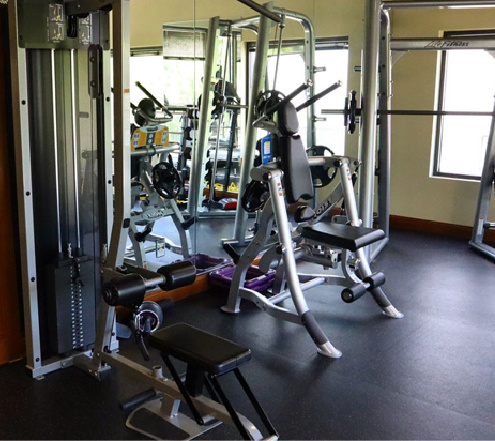Personal injuries, especially car accidents, are a common cause of back and neck pain. When there is a motor vehicle collision, the force of the impact creates major stress on the spine and supporting muscles.
Personal injuries, especially car accidents, are a common cause of back and neck pain. When there is a motor vehicle collision, the force of the impact creates major stress on the spine and supporting muscles. This can lead to a range of injuries and conditions, from muscle strains to herniated discs, that cause debilitating pain.
Even a seemingly minor personal injury can develop into a chronic condition that negatively affects your relationships, your job, and your overall quality of life. Especially if you leave it untreated, back and neck pain can make even the most simple household tasks difficult or impossible. Patients commonly report being unable to work in the yard, enjoy time with loved ones, or be able to do favorite pastimes such as walking or golfing.
Fortunately, it is possible to find relief if you do have back pain and/or neck pain as a result of personal injury. The options and amount of information out there can feel overwhelming, which is why we’re sharing this practical guide. From seeing a doctor to making lifestyle adjustments to knowing whether to work with a lawyer, the right answers can vary depending on your personal situation. By learning more, you can be more active with your care and make the right decision for your needs and goals.
Step One: Always See a Qualified Doctor
If you suffer from any kind of personal injury, from a slip-and-fall to a car accident to a workplace injury, always see a physician to get checked out. The main reason you should always do this is of course for your health and wellness.
For example, many injuries related to a car accident have a delayed onset of symptoms. Even a minor fender bender that you walk away from without any noticeable pain could develop into a more serious condition. By getting checked out, you can identify potential problems early and begin to seek treatment.
The other reason to seek professional care is to establish a medical record. If there are ever any legal or insurance implications, or you decide to work with a lawyer, a clear diagnosis after the incident can help to establish causality for your personal injury.
When seeing a doctor for back and neck pain, you should expect to undergo a physical exam with the following steps:
- Review of your medical history
- Discussion of the accident and personal injury
- Questions about your symptoms and function
- A physical evaluation and movement tests
- Diagnostic testing, such as an X-ray or MRI
Although sooner is better, it’s never too late to seek out diagnosis and treatment. Our state-of-the-art diagnostic facilities and expertise can help you start your journey to relief.
Step Two: Should You Work with a Lawyer?
Deciding whether you should seek legal representation is a personal question. Many patients decide to work with a personal injury lawyer to help them navigate the complex world of insurance and personal injury law. Medical care for back and neck pain caused by a car accident can be costly, and patients should ensure that they are receiving any compensation that is due to them.
When researching a potential personal injury lawyer, look into the following:
- Overall reputation and community standing
- Education and credentials
- Experience in handling your type of case
- Success rate for settlements
Don’t be afraid to trust your instincts. A lawyer should be a partner you can trust for the process, find someone who will be there to answer your questions, and take the time to truly educate you about your case. Whether you work with a lawyer or not though, your recovery and wellness are ultimately up to you.
Step Three: Commit to Nonsurgical Treatment
Back and neck pain related to a car accident can very often be treated using conservative therapies. Upon diagnosis of a spine condition or other personal injury, doctors will usually recommend patients attempt treatment such as:
- Getting plenty of rest
- Taking over-the-counter pain relievers needed
- Using hot and cold therapy, such as heating pads and ice packs
- Undergoing physical therapy to improve range of motion and strengthen supporting muscles
- Pain management interventions, such as steroid injections
- Therapeutic massage to relax tense muscles and improve blood flow
- Alternative therapies, including acupuncture, that can release natural pain relievers
Patients will also be encouraged to commit to a spine-healthy lifestyle. Getting regular therapeutic exercise, eating a nutrient-rich diet, staying hydrated, and avoiding tobacco products can all have a meaningful impact on your back and neck pain.
By finding the right combination of treatments and lifestyle changes, a large number of people can find lasting relief after a car accident.
Step Four: Knowing When to Consider Surgery
In all but the most serious emergency cases, spine surgery for back and neck pain from a personal injury is usually a last-resort treatment. If pain persists after weeks and months of nonsurgical therapy, you may want to see a surgeon for an evaluation.
The surgeon must be able to positively identify an operable condition, and you must be a good surgical candidate after going through a thorough medical screening and evaluation.
At Spine Center Atlanta, our highly skilled surgical team led by board-certified surgeon Dr. James L. Chappuis has helped a large number of patients overcome chronic back and neck pain. Our state-of-the-art surgical center is fully equipped to perform a wide range of procedures, from minimally invasive decompression to spinal fusion.
With pain management, physical therapy and rehabilitation, and a spine surgery center under one roof, Spine Center Atlanta can help you no matter where you are on your personal injury treatment journey. Contact us today to learn more and to schedule your initial appointment.






























